
Table of Contents
Scientific Classification
- Kingdom: Animalia
- Phylum: Chordata
- Class: Reptilia
- Order: Squamata
- Family: Agamidae
- Genus: Uromastyx
- Species: U. aegyptia
Quick Overview
The Egyptian Uromastyx, also known as the Egyptian Mastigure, is a fascinating and hardy desert reptile known for its spiky tail and vibrant coloration. Native to the deserts of Egypt and the Middle East, these lizards are herbivores and can live for a long time under proper care.
Fast Facts
- Scientific Name: “Uromastyx aegyptia”
- Lifespan: 15-30 years in captivity
- Average Size: 24-30 inches
- Diet: Herbivorous
- Habitat: Desert and arid environments
Did you know?
The name ‘Uromastyx’ is derived from the Ancient Greek words ‘ourá’ and ‘mastigá’, which mean ‘tail’ and ‘whip’ respectively, indicating the lizard’s signature whip-like tail.
Appearance
The Egyptian Uromastyx boasts a robust body with rough, bumpy scales and a pronounced spiny tail. They can be found in a range of colors, from yellow and green to deep brown, often with intricate patterns along their backs.
Size and Weight
Fully grown Egyptian Uromastyx lizards generally measure between 24 to 30 inches in length, with males usually being larger than females. Their weight can vary, but many healthy adults weigh around 2 to 3 pounds.
Temperament and Behavior
While they can be shy initially, with regular, gentle handling, Egyptian Uromastyx can become quite tame and interactive. They’re diurnal, active during the day and prefer to burrow or hide when they feel threatened.
Fun Fact:
Their powerful tails, covered in spiky scales, serve as a formidable defense mechanism against predators.
Habitat and Distribution
Natively, they inhabit the arid deserts of Egypt, the Middle East, and parts of North Africa. They prefer rocky terrains where they can burrow and create shelters.
Care Guide
For those considering an Egyptian Uromastyx as a pet:
- Provide a spacious enclosure with plenty of hiding spots and a basking area.
- Maintain a temperature gradient between 80-110°F.
- UVB lighting is crucial for their health.
- Sand or birdseed substrates are commonly used for their flooring.
- Ensure a primarily vegetarian diet, rich in seeds, leaves, and occasional vegetables.
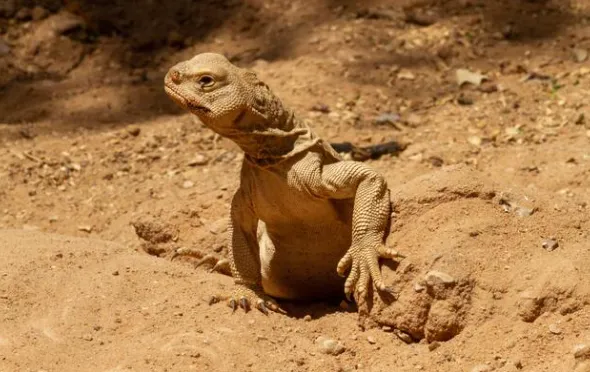
Diet and Nutrition
Primarily herbivorous, they thrive on a diet of seeds, beans, lentils, and leafy greens. It’s important to ensure they get adequate calcium and other essential nutrients.
Health and Wellness
Regular check-ups are recommended. Like other reptiles, they’re prone to metabolic bone disease without proper UVB exposure. Dehydration is another concern due to their desert origin, so proper hydration should always be monitored.
Breeding
Breeding generally occurs after a period of brumation. Post-mating, females lay a clutch of eggs which will require a warm, sandy area for incubation.
Conservation Status
The Egyptian Uromastyx is listed as Least Concern, but habitat destruction and the pet trade are ongoing concerns.
Fun Fact:
Despite their fierce appearance, Egyptian Uromastyx are strict herbivores and play a role in seed dispersal in their native habitats.
Photo Gallery
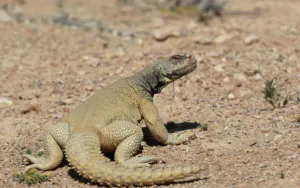
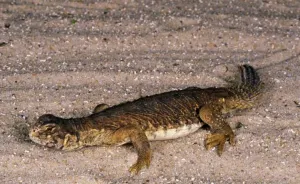
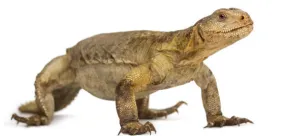
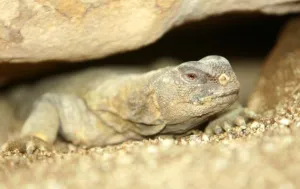
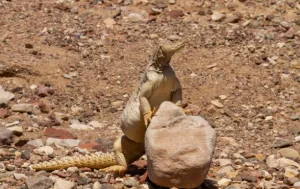
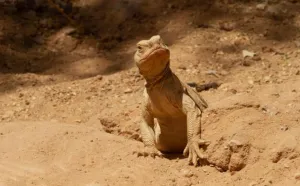
Check out the video below to see an Egyptian Uromastyx displaying territorial behavior:
Related Profiles
Share This Profile:
3 Amazing Facts About Egyptian Uromastyx
- Solar-Powered: These lizards love to bask. They can often be spotted soaking up the sun for hours, which aids in digestion and overall health.
- Ancient Creatures: Fossils suggest Uromastyx lizards have been around for over 50 million years, making their ancestors contemporaries with some dinosaurs.
- Built for the Desert: Their nasal passages have evolved to reclaim moisture from the exhaled air, preventing water loss and helping them survive in arid conditions.
- Enchi Ball Python: A Unique and Stunning Morph of Python regius - March 27, 2025
- Emerald Tree Monitor: The Enigmatic Green Guardian of the Rainforest - March 26, 2025
- The Egyptian Cobra (Naja haje): A Fascinating Serpent - March 25, 2025
